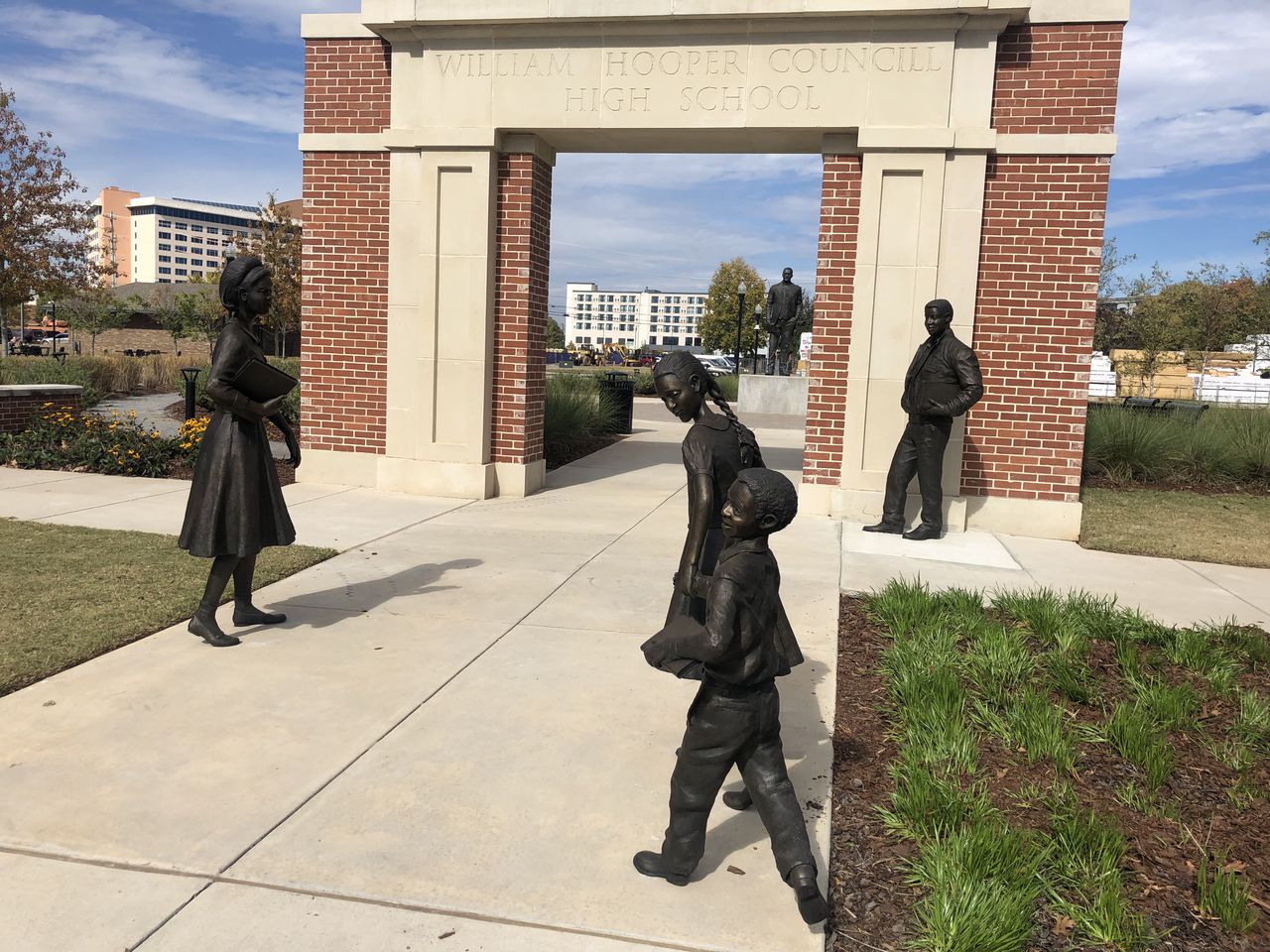Park honoring Huntsville school for Black children now has âstudentsâ again
Finally, the school has the one thing it’s been missing for decades.
Students.
An appropriate afterlife for Huntsville’s long abandoned Councill High School – a designated education center for African American students in segregated Alabama for 100 years – was debated and planned for years before the site was remade in 2020 into a picturesque downtown park replicating the school’s footprint.
And there was the statue of William Hooper Councill himself, a former slave who became a journalist, lawyer, and founder of Alabama A&M University in Huntsville, standing just outside what once was the school’s main entrance.
On Tuesday, though, there were students on campus for the first time since the school closed in 1966.
By the hand of Huntsville sculptor Dan Burch, enrollment at Councill High School is now four. The statues, unveiled in a ceremony Tuesday, represent different ages of students who attended African American schools in Huntsville during an era when they had no choice. There is the little boy holding the guiding hand of his big sister, a studious young teenager carrying books in her right arm and the athlete wearing a letter jacket with his own set of books.
Together, they seemingly brought to life the 2½ acre landscaped park located on St. Clair Avenue adjacent to the Huntsville/Madison County Library.
“The students’ statues are a testament to overcoming, to not being limited by your circumstances,” said Brenda Chunn, a member of Councill High’s final graduation class.
For Chunn, this park and the memories it protects has been a passion. She was president of the school’s alumni association when the park opened three years ago and now serves as its first vice president. She hailed it Tuesday as a “destination” for Huntsville visitors as a grassy oasis amid the city’s booming downtown growth.
Even as the familiar sounds of construction on a nearby mixed-use development rattled on throughout the ceremony, it mingled Huntsville’s present and future with its past.
Mayor Tommy Battle went to each statue, accompanied by some of the school’s former students, and each time initiated the “3, 2, 1 …” countdown before the royal blue – Councill High royal blue – coverings were removed.
Councill, the mayor said, “would be proud of this moment.”
“Soon, we’ll be able to see the joyful faces of children who embody the spirit of the students who attended this school,” Battle said before the unveiling. “This park was designed to recreate the Councill School experience. Bricks on the site and the stone steps are from the original building. The pathways that take you around the park outline the school’s footprint. The auditorium, courtyard and classrooms are represented within the interior layout. And it’s our hope that the Councill alumni will return home here and recognize the spaces and places that helps shape their lives.”
Huntsville Councilman John Meredith addressed the audience next. Meredith’s perspective was unique, given that his father, James Meredith, broke the color barrier at the University of Mississippi in 1962 and was wounded by a shotgun blast while marching for civil rights in 1966.
“I’m truly, truly honored to be here today,” Meredith said. “This is something that does not happen that often in America anymore. And that is the cultural recognition of how a certain class of people had to be educated because the larger society didn’t want them educated. It’s not often we get to look back, in a constructive way, at some of the differences that are instilled in our very natures. And education is one of those topics.
“Many of us here today got to go to any school we wanted to go to, got to get the best quality of education our parents could afford us and our communities could provide us. Not all of us here today enjoyed that. And it’s an honor to be here with some of those that were not afforded that privilege in life but overcame what could have been an insurmountable obstruction.”
